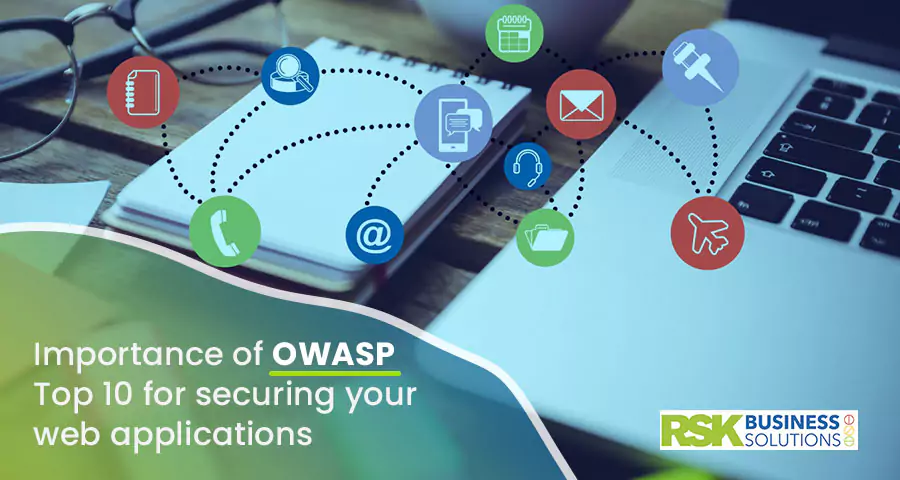
How often do we actually pay attention to our web application security?
Well, surprisingly not much!
Today, if you are a business owner, having web applications is your go-to move to provide your customers with a seamless experience.
Therefore, securing these applications is the biggest concern!
Related Articles

IT Outsourcing
RSK BSL Tech Team
May 4, 2025
|
|

Mobile Application Development
RSK BSL Tech Team
April 30, 2025
|
|

Software Development
RSK BSL Tech Team
April 27, 2025
|
|

Hire resources
RSK BSL Tech Team
April 24, 2025
|
|

Software Development
Praveen Joshi
April 20, 2025
|
|

Artificial Intelligence
Praveen Joshi
April 17, 2025
|
|

Pen Testing
Praveen Joshi
April 15, 2025
|
|

AI Tech Solutions
RSK BSL Tech Team
April 14, 2025
|
|

Software Development
RSK BSL Tech Team
April 9, 2025
|
|

Pen Testing
RSK BSL Tech Team
April 7, 2025
|
|

Software Development
RSK BSL Tech Team
April 3, 2025
|
|

Cloud Application
RSK BSL Tech Team
March 31, 2025
|
|

Pen Testing
Praveen Joshi
March 27, 2025
|
|

Software Development
RSK BSL Tech Team
March 25, 2025
|
|

Software Development
RSK BSL Tech Team
March 20, 2025
|
|

Software Development
RSK BSL Tech Team
March 18, 2025
|
Importance of OWASP Top 10 for securing your web applications
How often do we actually pay attention to our web application security?
Well, surprisingly not much!
Today, if you are a business owner, having web applications is your go-to move to provide your customers with a seamless experience.
Therefore, securing these applications is the biggest concern!
Application and data security has emerged to become a key criterion towards choosing offshore product development services across the globe. It requires extensive research, experimentation and of course, understanding key areas of vulnerabilities within a software that require utmost attention.
Most software companies in UK consider the OWASP Top 10, a standard awareness document for developers as the holy grail when it comes to ensuring adequate web application security. The OWASP Top 10 covers ten fundamental aspects of importance that companies can look out for when designing an application. Let us take you through each one of these:
1. A1:2017-Injection: SQL, NoSQL, OS, and LDAP injection errors can potentially trigger the execution of unwanted commands or unauthorized access.
2. A2:2017-Broken Authentication: Sometimes challenges occur with wrongly implemented authentication and session management events, which can unfold into compromising accounts, leaked sensitive info such as passwords, tokens etc.
3. A3:2017-Sensitive Data Exposure: Adequate protection of sensitive data, such as financial, healthcare, and PII is a must to avoid for cyber-crimes like credit card frauds, identity thefts, and/or many others. These require special precautions to be taken when exchanged with the browser.
4. A4:2017-XML External Entities (XXE): It is necessary to avoid using older versions of XML processors to evaluate references of external entities within story documents. If this aspect is not given due attention, these entities can capture and divulge internal info such as the file URL handler, file shares, port scanning and many more.
5. A5:2017-Broken Access Control: Access restrictions must clearly mention permissions for access in order to avoid unauthorized functionality access.
6. A6:2017- Security Misconfiguration: Security misconfigurations can arise from ad hoc configurations, insecure cloud storage and unclear error messaging. Therefore, regular configuration and patching of OS, frameworks, applications etc is vital.
7. A7:2017-Cross-Site Scripting XSS: Webpages lacking proper data validation containing malicious data can prompt attackers to execute commands using XSS scripts. This can interrupt browsing sessions, redirect users to malicious sites and many more.
8. A8:2017-Insecure Deserialization: Deserialization errors can result in major escalations and server attacks, many of them result due to remote code execution.
9. A9:2017- Using Components with Known Vulnerabilities: smaller sub-modules within an application (libraries, frameworks, and others) are vulnerable to security threats and require scrutiny as well.
10. A10:2017-Insufficient Logging & Monitoring: Delayed incident response due to insufficient logging and monitoring can result in unlawful access and tampering/destruction of data.
We hope you now have an idea of how OWASP Top10 can be a great document for securing your applications. If you are looking to implement the OWASP Top 10, allow us to help you secure your web applications effectively and efficiently!
Praveen Joshi
Praveen is a seasoned IT Solutions Leader and Director at RSK Business Solutions, a technology-driven IT Consulting Company that specializes in Bespoke Software Development, Agile Consulting, Mobile App Development, Smart Sourcing, and much more. For the last 17 years, he has been delivering quality custom IT solutions that help businesses achieve their goals.

 Share
Share Post
Post Tweet
Tweet Copy
Copy


